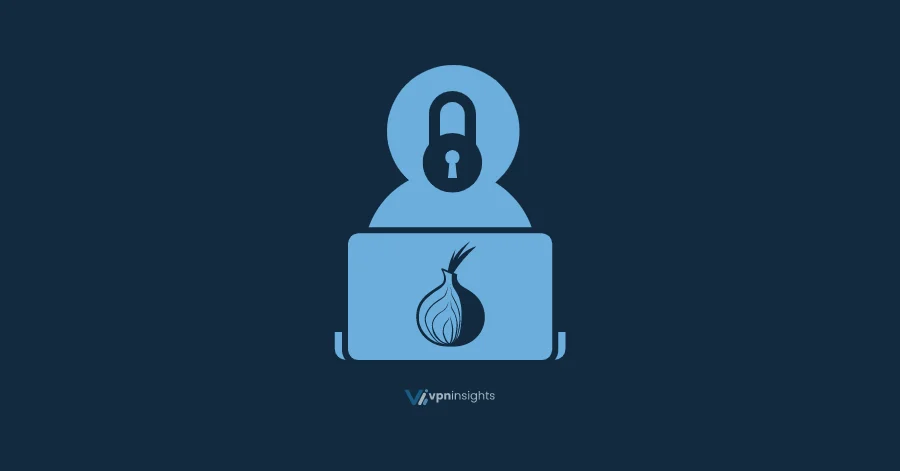Tor, also known as the Onion Routing browser, has gained a reputation for its robust data security and commitment to online privacy. Originally developed by the US Navy to ensure secure communications, Tor has since evolved into a publicly accessible open-source platform for anonymous browsing.
Despite its strong security features, Tor often finds itself under scrutiny due to its association with the dark and deep web. This has led to skepticism among potential users who wonder if Tor is genuinely safe to use.
Despite these concerns, Tor remains a popular choice for individuals seeking online anonymity and enhanced security. It provides a valuable tool for journalists, whistleblowers, activists, and privacy-conscious individuals to maintain their online anonymity.
However, it’s important to note that using Tor effectively often requires employing additional security and privacy measures. In this article, we will explore some of the security challenges associated with Tor and discuss best practices for using it safely. But before we delve into these details, let’s first gain a better understanding of how Tor works.

How Does Tor Work?
The name “Tor” is derived from its ingenious operational technique known as “The Onion Routing.” This distinctive browser functions by guiding a user’s internet traffic through a series of intermediary servers, referred to as nodes, before ultimately reaching its intended online destination. This layered proxy approach is not only the namesake of the browser, “The Onion Router,” but also the cornerstone of its ability to protect user anonymity.
In addition to routing data through these nodes, Tor employs robust encryption to fortify the confidentiality of the transmitted information. A typical Tor session utilizes a minimum of three nodes, functioning as follows:
- Entry Node: This node serves as the point of entry for data into the Tor network, meaning it is privy to your IP address. The data passing through is also enveloped in multiple layers of encryption to ensure security.
- Middle or Relay Node: After departing the entry node, internet traffic arrives at the middle node, where the initial encryption layer is unwound. This node also plays a pivotal role in obscuring the connection between the entry node and the exit node, thereby enhancing user privacy.
- Exit Node: At this stage, the data exits the Tor network and proceeds towards its final destination. While the exit node is aware of the destination being accessed, it remains oblivious to the user’s IP address. Here, all encryption layers are meticulously removed.
In essence, the Tor browser can be thought of as an evolved iteration of Firefox, thoughtfully optimized to prioritize online privacy, security, and user anonymity. It functions as a robust shield against a range of online threats, encompassing browser fingerprinting and crypto-jacking.
Nonetheless, questions often linger concerning the safety and legality of employing Tor. In the subsequent sections, we will delve into the reasons behind these concerns and provide comprehensive guidance on how to utilize Tor securely and responsibly.
Is Tor Safe To Use? Privacy Issues With TOR

Tor, in itself, is a safe and powerful online security and anonymity tool. It empowers users to browse the web free from surveillance and tracking concerns. However, it has faced some vulnerabilities over time, including:
- Malicious Exit Nodes: Tor has a history of encountering malicious exit nodes, although these have been well-documented and recognized.
- Compromised Network: Because all Tor nodes are open source, there’s a possibility of law enforcement monitoring them, as exemplified by the FBI’s previous efforts to crack the network.
- Weak Layered Encryption: Unlike VPNs, Tor relies on layered encryption, which can be relatively weaker and more susceptible to certain attacks.
- ISP Throttling: Tor’s P2P activity can be recognized by ISPs, leading to bandwidth throttling due to high data consumption.
- Tainted Reputation: Tor is often associated with the Dark Web, which can draw attention from ISPs. Excessive use may even raise flags with government authorities.
- Slow Speeds: Because Tor data travels through multiple relays and nodes, it can result in frustratingly slow connections.
However, these security concerns are well-documented and manageable through various methods. There are numerous strategies available to enhance the safe use of Tor. Despite these vulnerabilities, Tor has a longstanding reputation for providing online safety and security. It is considered one of the premier tools for online anonymity, effectively concealing user IP addresses and helping combat online censorship.
How To Safely Use Tor (7 Best Practices)?

Although admittedly, Tor offers security, the set of vulnerabilities it comes along with is enough to compromise any scrap of privacy it provides. Therefore, it is best to use the browser and some privacy measures to ensure you get top-notch security and privacy with Tor. It is best you start with:
1. Using A Reliable VPN Connection.
VPNs are the ultimate online privacy and anonymity tools. They hide your IP address to provide online anonymity and ensure privacy by encrypting your internet traffic and carrying your data through an encrypted tunnel through encrypted packets.
As mentioned above, Tor is an excellent anonymity tool; however, it does have its vulnerabilities. Therefore to mitigate those vulnerabilities and to use Tor safely it is best to combine it with the best VPNs for Tor. However, there stands to be confusion in determining the best possible methods of using Tor with a VPN.
2. Use Antimalware Protection
Antivirus or antimalware is not just crucial to use with Tor, and it should be a standard part of our online experience despite the activity you perform. Even with watching mere cat videos, it is best to have antimalware protection running in the background.
With Tor, it becomes even more crucial to have robust antimalware protection due to its compromised malicious exit nodes. Apart from that, not only these nodes can inject you with malware; there are several other possibilities, such as facing a malware invasion from any of the nodes our traffic hops on. Since they all are open source, it is best to remain careful and vigilant.
3. Configuring Security Settings
Tor browser comes with three separate layers of security that you can access using the shield option button next to the address bar. You can start configuring your Tor browser settings from the list of options by choosing the “Advanced Security Setting.” Each layer of security offers a different exposure to online privacy and security, and their features are as follows:
- Standard: this option provides you a basic level of Tor browser security; apart from that, it is no different from any other browser you use.
- Safer: with enabling this option, you disable JavaScript and block various math symbols and fonts. However, this option messes with some websites’ functionality since it also disables auto-playing audio and videos.
- Safest: this option has the utmost Tor privacy, and only the very basic websites will work smoothly.
You can vary from implementing complete to essential Tor browser privacy using these different security options. However, even at the minor privacy settings, Tor, by default, ensures protection through its private browsing mode. Therefore, any activity you carry out on Tor remains secure and private since even your web history and cookies are deleted whenever you close the Tor browser.
4. Look Into New Circuits And Identities.
Tor browser uses a collection of nodes called circuits to connect you to the website you wish to visit. You can renew your circuits and IP address if you want to wipe off your Tor browser activity and start fresh completely.
All you need to do is click on the shadowed window next to the website address, give you a new circuit, and reloading your website. Renewing circuits is convenient when experiencing a slow website, and this method is only applicable on an active tab.
5. Switch To Using Private Search Engines
Popular search engines, especially Google, are notorious for collecting and selling user information. They have several methods and reasons to legitimize the information collection despite being a clear violation of your privacy.
It is, therefore, best to switch on using private search engines with Tor. Private search engines like DuckDuckGo or Disconnect.me can help you remain private. These search engines don’t collect user activity and are, therefore, secure.
6. Use Tor “Pluggable Transport” Bridge
Tor has several bridges to help users attain privacy and bypass censorship, such as the Pluggable Transports. It works to disguise users’ Tor-encrypted traffic to look like HTTP or random traffic to help bypass censorship. You can quite easily set up a Pluggable Transport bridge in the following steps:
- Click on the Tor Button
- Go to Tor Network Settings
- Select Tor is censored in my country
- Then select a built-in bridge
These steps will present you with various PT types in the menu list. With the options available you can select a suitable bridge for your connection and enjoy unrestricted internet.
7. Best Tips For Using Tor
Admittedly several methods can help you use Tor safely. However, each of these methods is likely to fail if you don’t remain cautious. Remember, Tor is only as safe as you make it to be, which is why there are several online habits that you absolutely need to rethink to use Tor safely, such as:
- Don’t log in to personal accounts such as Gmail, Drive, or Facebook.
- Refrain from uploading personal media files such as pictures or videos. In case you need to upload an image, wipe off its EXIF data first.
- Avoid sharing personal information.
- Always use the secure HTTPS version of sites; otherwise, you might face a malware attack.
- Abstain from P2P downloading such as Torrents
- At all coast don’t use Tor for sites with your personal information like phone numbers or credit card details.
- It is best to use Tor with secure OS such as Linux, Tails, or Whonix instead of Windows. While using Tor over Windows, it is best to use Windows sandboxing.
- Stay away from illegal activities.
Attaining online privacy and security is a complex task, and even a tiny step out of the line can bust your carefully constructed security bubble. It is, therefore, best to abide by these tips at all times while using Tor.
Are There Any Alternatives To Tor?
Several browsers are available like Tor, and if you are cautious of the browser itself, you can opt for one of its alternatives. However, while using any Tor alternatives, it is best to use a reliable VPN to help mitigate vulnerabilities and ensure robust online privacy. Some of the most well-known Tor alternatives are as follows:
- I2P: It deploys the use of darknet technology and ensures privacy through layered encryption
- Freenet: helps get past censorship and allows accessible online communication through P2P networks.
- ZeroNet: using the P2P network, it works like a forum where it allows privacy through Bitcoin cryptography
- GNUnet: utilizes P2P communication through Bluetooth, HTTPS, WLAN, UDP, and TCP ports and allows privacy by reducing user PII.
The argument on what is better, Tor, or its alternatives is all for you to decide. However, it is crucial to remember that these are all mere software and thus have vulnerabilities. It is, therefore, best to remain vigilant and ensure privacy through various means.
How to Access the Dark or Deep Web Safely

It is quite easy to access the deep and the dark web for anyone who clearly understands these two parts of the internet. The deep web is merely the unindexed part of the internet where most private information is stored. Accessing the deep web is not much of a hassle, and you might even access it regularly while accessing your bank information. However, even with that, it is best to try and remain secure.
Accessing the dark web is somewhat of a dangerous if not a complex ordeal. Since most of the sites on the Dark Web are .onion sites, it is only possible to access the Dark Web through the Tor browser. Moreover, finding these .onion sites also remains tricky, and you have to go through various directories to find suitable ones.
However, while accessing the dark web, it is crucial to address the privacy and security issues that you might come across. The most critical element is maintaining online anonymity to protect yourself from hackers and criminals. Therefore, it is crucial to use a VPN with Tor for accessing the Dark Web.
Apart from that, it is best to remember that while the Dark Web is not entirely a place for criminal activity and is often used by journalists, whistleblowers, and activities, illegal things happen. Therefore, it is best to remain vigilant and careful and stay away from such practices.
“VPN over Tor” VS “Tor over VPN”- which is better?
The “VPN over Tor” method connects with a VPN first, then Tor, and works by creating a tunnel through the Tor network and then connecting to the VPN from within it. The Tor over VPN method is a hassle and very difficult to set up, not to mention that it is not secure enough.
To start, with this setup, the VPN provider can monitor all the activity you carry out within the Tor. And if your VPN by any chance logs information, the chances of online anonymity are reduced to zero. Moreover, with this method, you also come across the slow speeds of the Tor network.
In contrast to this, the “Tor over VPN” method, also known as Onion over VPN, this method is reliable and easy to set up. It involves connecting to a VPN first and then proceeds with connecting to Tor. Anyone using this method gets the privacy and the security of both the anonymity tools. First off, the VPN prevents the Tor nodes from seeing your IP address, allowing you to remain anonymous. Moreover, the Tor network ensures your VPN remains blind to your activities within Tor.
Another advantage of this method is that it helps bypass ISP throttling issues with Tor. Since the VPN traffic is encrypted, ISPs cannot monitor your activity and then throttle your connection. Similarly, this method also helps in using Tor where it is restricted, such as school networks.
Is it illegal to use Tor?
It is the most popular misconception regarding Tor that it is illegal. And although Tor does have a bad reputation for its misuse by criminals, it is not unlawful to use Tor at all unless you use it for illegal activities. Otherwise, Tor is safe to use. However, due to its reputation, frequent use of Tor can have you end up on the Government’s list of targets and have the ISP closely monitoring your activity. So be careful!
Is Tor a VPN?
While Tor and VPN are both online anonymity tools, they stand starkly apart from each other. First off, Tor uses layer encryption while a VPN encrypts user information and then further carries it through an encrypted tunnel for additional security.
Moreover, Tor relies on a decentralized layering network called circuits for safe data transmission. At the same time, VPNs connect to a single server to form a secure VPN tunnel to carry user information. Apart from that, VPNs help users stream and download Torrents while also providing users with antimalware protection. In contrast, the Tor browser is not suitable for such activity. It is a safe browser that allows browser-level user anonymity and privacy.
Which countries have banned Tor?
Several countries are particularly keen on regulating the internet, so they have anonymity tools like Tor banned. Some of the most known countries that censor the usage of Tor are:
- China
- France
- Russia
- HongKong
- Belarus
- Iran
- Germany
- United States
- Netherlands
Most of these countries have strict surveillance and data retention laws; therefore, using Tor is tricky. The only way around is to use bridges that help disguise Tor traffic and get past censorships.
Final Words
Tor is one of the most powerful security programs. No other accessible browser can give you the security and encryption to surf the internet safely. With sensitive surfing habits, a decent antivirus, and a trustworthy VPN, your Tor experience is safe and trouble-free. There’s a lot to do with Tor.